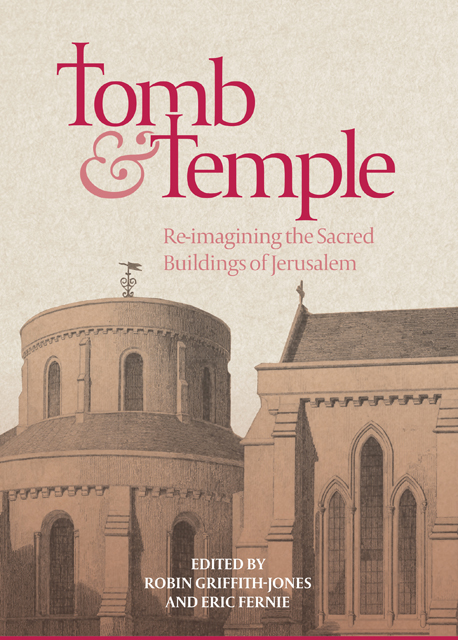Book contents
- Frontmatter
- Contents
- Illustrations
- Preface
- Contributors
- Abbreviations
- Editors’ Note
- Introduction
- Part I Re-presenting Jerusalem
- Part II The Church of the Holy Sepulchre
- Part III The Noble Sanctuary / The Temple Mount
- Part IV The Orthodox Churches
- Part V Round Churches in the West
- Appendix: The Knights’ Effigies: Newly Discovered Drawings by John Guillim, c. 1610
- Epilogue
- Index
- Already Published
19 - The Use and Meaning of the Twelfth- and Thirteenth-Century Round Churches of England
Published online by Cambridge University Press: 17 January 2023
- Frontmatter
- Contents
- Illustrations
- Preface
- Contributors
- Abbreviations
- Editors’ Note
- Introduction
- Part I Re-presenting Jerusalem
- Part II The Church of the Holy Sepulchre
- Part III The Noble Sanctuary / The Temple Mount
- Part IV The Orthodox Churches
- Part V Round Churches in the West
- Appendix: The Knights’ Effigies: Newly Discovered Drawings by John Guillim, c. 1610
- Epilogue
- Index
- Already Published
Summary
Construction of the twelfth- and thirteenth-century round churches of England coincides largely with the period from the Latin conquest of Jerusalem in 1099 to the city’s brief recapture by the Emperor Frederick II in the 1230s and early 1240s. The first such rotunda was built by the independent Augustinian Order of the Holy Sepulchre on lands in Cambridge, granted sometime between 1114 and 1130 by Reinaldus, abbot of Ramsey, to three men of the confraternity. This church, still dedicated to the Holy Sepulchre, is a classic example of Norman architectural style, with a double-shelled interior supported on eight massive stone columns. The last to be constructed is the church of St John the Baptist in Little Maplestead, near Halstead, in north-central Essex. Its Gothic elements and a change of designation from ecclesia to capella point to a date of construction between 1240 and 1245.
Two-thirds of England’s rotundas from the period can be attributed to the military orders, that is, the Order of the Temple and the Order of the Hospital of St John of Jerusalem. The Templars, together with the Cistercians, were encouraged to enter the country by King Henry I in, or shortly after, 1128, and the Hospitallers very likely came at the same time. While these orders were together responsible for building many preceptory or commandery churches throughout the land, we know currently of only eight rotundas which can be attributed to them. Of these, six were Templar foundations and two were Hospitaller. The numbers correspond in very general terms to the relative wealth and influence of the two orders, the Templars having a distinct advantage from the start over their sister, Hospitaller, order. This prominence on the part of the Templars developed early, despite the Hospitallers having been granted their foundation charter by Rome five years earlier than the former; that is, in 1113 as opposed to 1118. They were founded to meet the very specific needs of an age which invested heavily in the salvation of the soul through pilgrimage, the most outward expression of which was participation in the crusades, themselves conceived as nothing short of armed pilgrimages.
- Type
- Chapter
- Information
- Tomb and TempleRe-imagining the Sacred Buildings of Jerusalem, pp. 376 - 386Publisher: Boydell & BrewerPrint publication year: 2018
- 2
- Cited by

